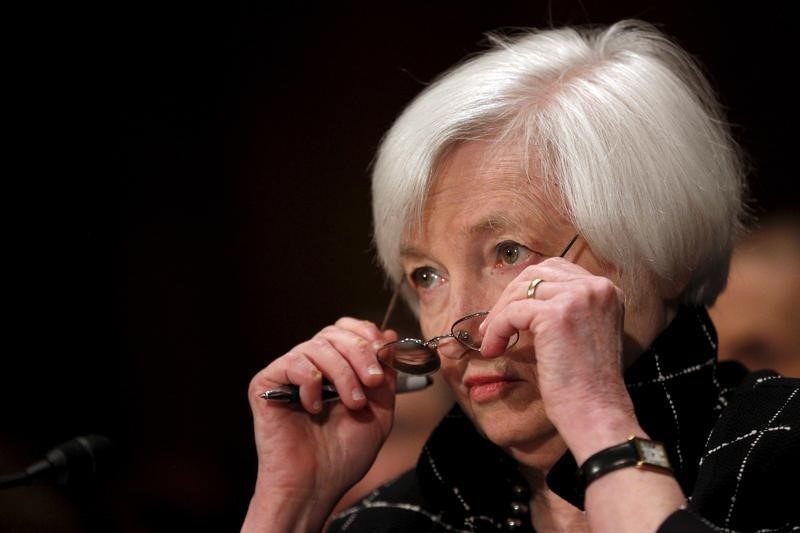Investing.com – With the recent string of more hawkish remarks from Federal Reserve (Fed) officials, markets readjusted expectations for a rate hike to arrive in the U.S. central bank’s policy announcement on Wednesday at 2:00PM ET (18:00GMT).
Though analysts were widely unanimous on the fact that last Friday’s employment report sealed the deal for the Fed to tighten policy by 25 basis points, bringing interest rates up to a range between 0.75% and 1.00%, they disagreed on the wider implications for the future path of U.S. monetary policy.
Markets are currently pricing in Wednesday’s rate hike odds at around 91%, according to Investing.com's Fed Rate Monitor Tool.
More than the tightening itself, the focus will be on the updated economic projections, particularly the dot plot that shows members’ expectations for future changes to interest rates, and remarks from Fed chair Janet Yellen’s follow-up press conference as markets attempt to gauge to what degree the U.S. central bank may have become more aggressive with respect to monetary policy.
Fed officials previously projected three rate hikes in 2017, but that might move up to four, amid signs of an uptick in inflation and continued strength in the jobs market.
Ahead of Wednesday’s events, the chance for a third hike by December was above the 50% threshold, though odds for four moves by the end of the year stood at a paltry 20%.
Too early for more aggressive outlook on rates?
Among those analysts that feel at this juncture that the Fed will only raise rates three times in 2017, analysts from HSBC remarked that they anticipate no change in the median projection from the central bank for 2017, 2018 or 2019.
“Although a few individual policymakers may change their projections, we do not think there will be enough movement to change the medians,” they explained.
Along similar lines, experts at UBS commented that a shift to four rate hikes would require four Fed members to increase their forecasts when compared to the December projections.
“And we do not believe that recent data support that shift,” they explained.
Economists from ING also stated that they “aren’t convinced” that the Fed will move again in June.
To explain their point of view, these experts cited the tendency for a mid-year lull in the U.S. economy, a danger that President Donald Trump’s fiscal plans may be watered down by the Congressional budget, wage growth (currently at 2.8%) that could struggle to break 3.0% until June figures (which will not be released until July) and warned that the political upheaval in Europe, with its corresponding effect on U.S. financial conditions, may not be fully out of the pipeline.
They explained that the rate hike on Wednesday is now simply a “formality”, but that the reasons for the move are what matter for future Fed policy decisions.
“There’s a high bar for a hawkish surprise from Yellen,” these economists insisted.
A ‘de facto hike’ in addition to 3 rate increases?
Throwing a wrench into the works, ING also mentioned that one of the obstacles to an assumption of higher interest rates was the need for “clarity on the Fed’s plans on balance sheet reduction”.
“Tapering reinvestment of proceeds from the Fed’s U.S. Treasury holdings could act as a de-facto hike later this year or early next,” they explained.
In fact, Goldman Sachs, with one of the more hawkish predictions among analysts, recently cited that possibility in a note released just after Friday’s jobs report.
The broker not only pulled forward its prediction for three rate hikes to March, June and September, as opposed to the previous call for increases in March, September and December, but also changed the timing for balance sheet normalization to begin in the fourth quarter of this year as opposed to its prior call for mid-2018.
“Under our forecasts for the U.S. economy, we see it as a close call as to whether the FOMC would raise the funds rate four times this year or hike three times and begin balance sheet normalization,” Goldman chief economist Jan Hatzius wrote.
“But for a variety of reasons, including considerations around the transition to a new Fed chair in 2018, we see earlier balance sheet normalization as slightly more likely than a fourth funds rate increase,” he concluded.
